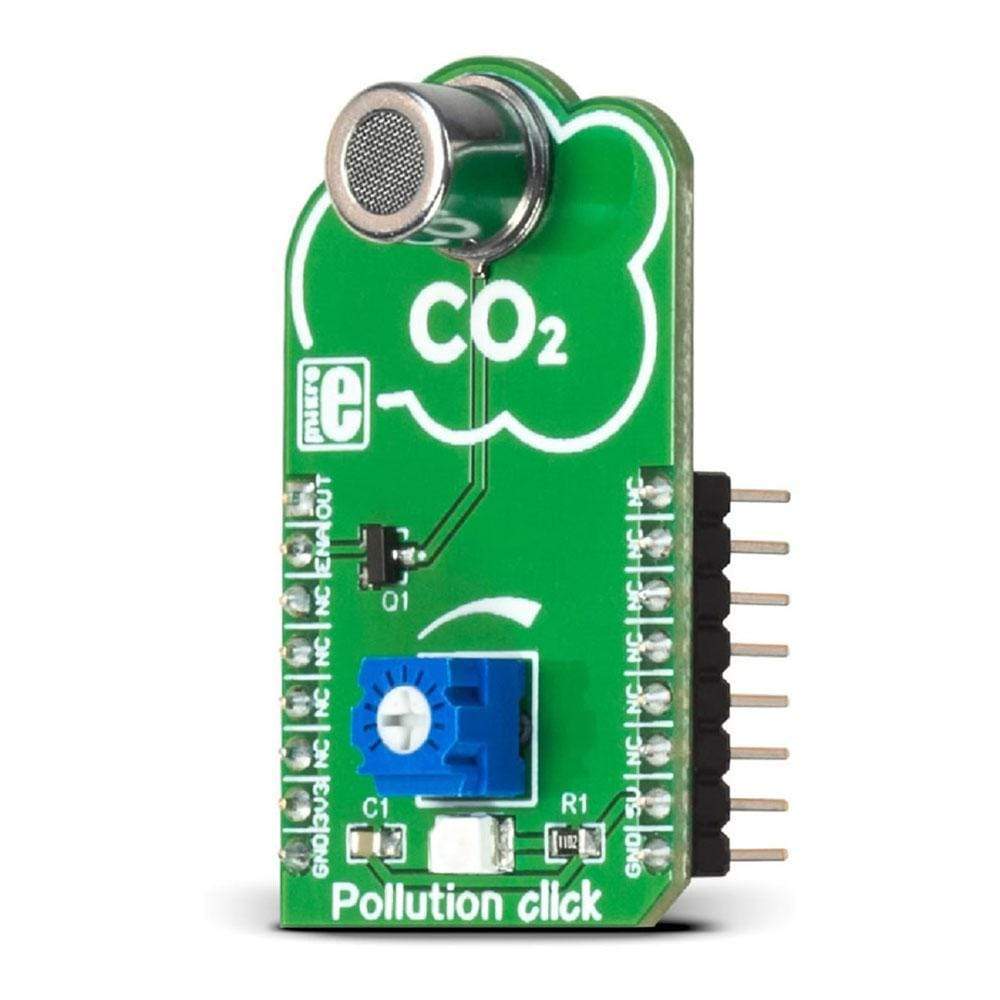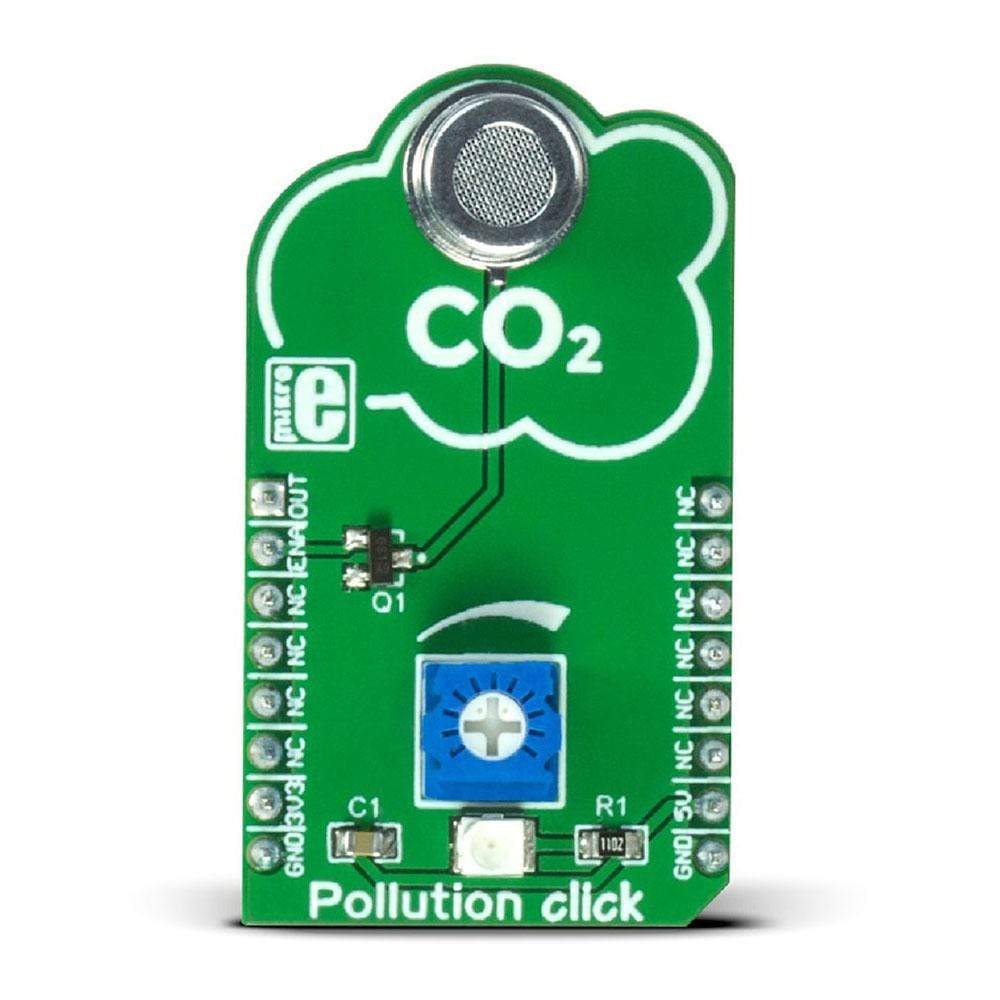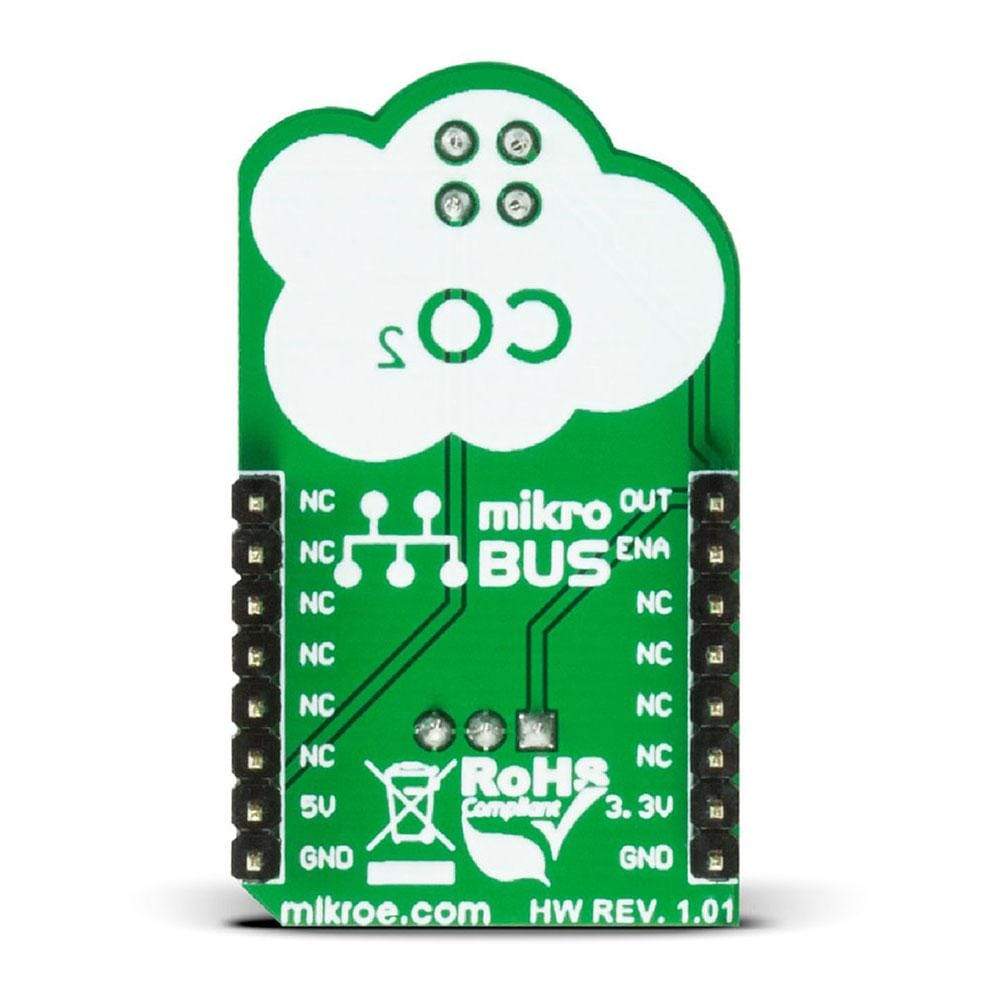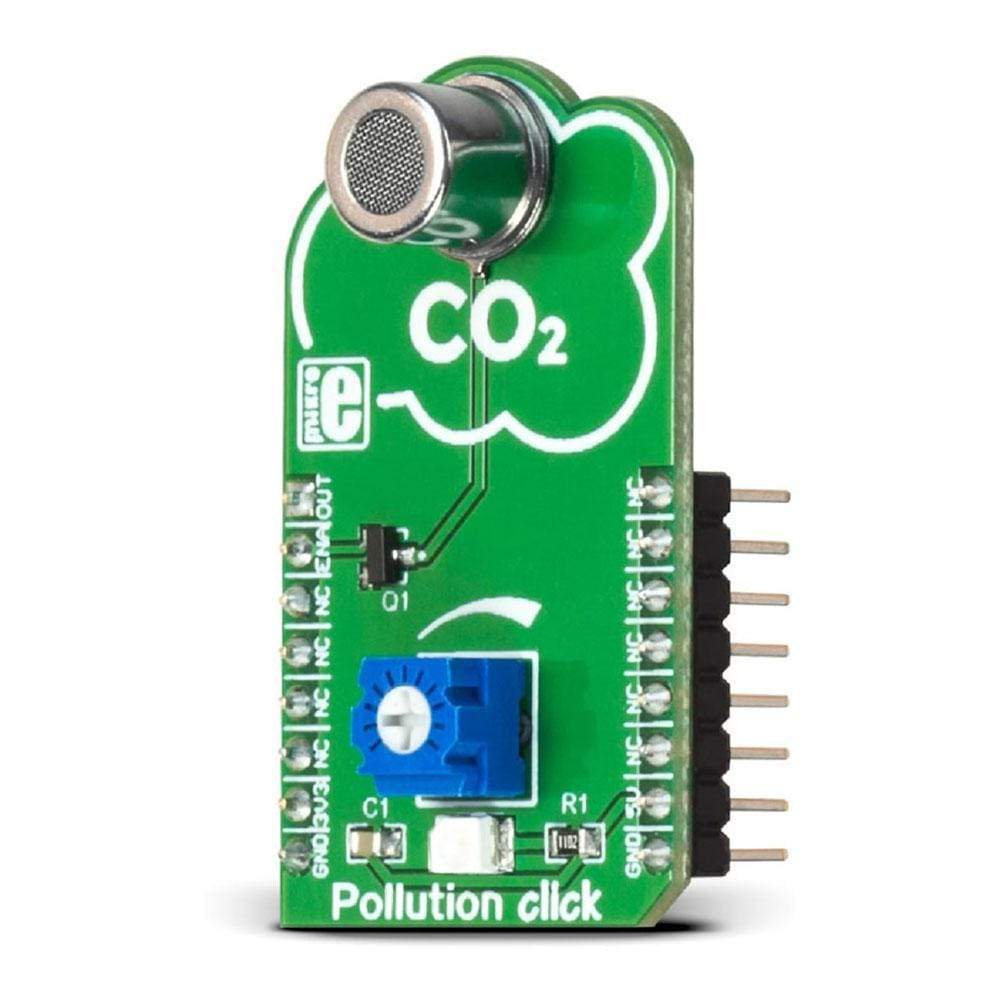
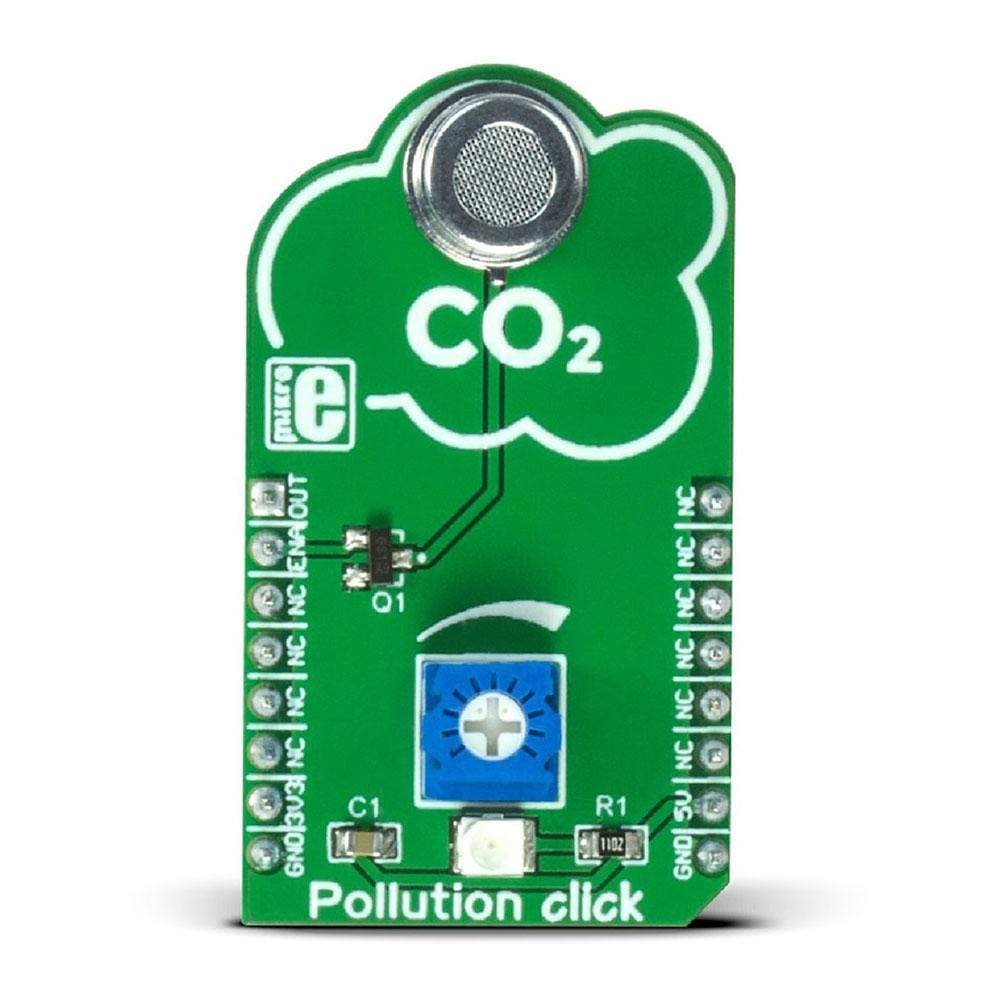
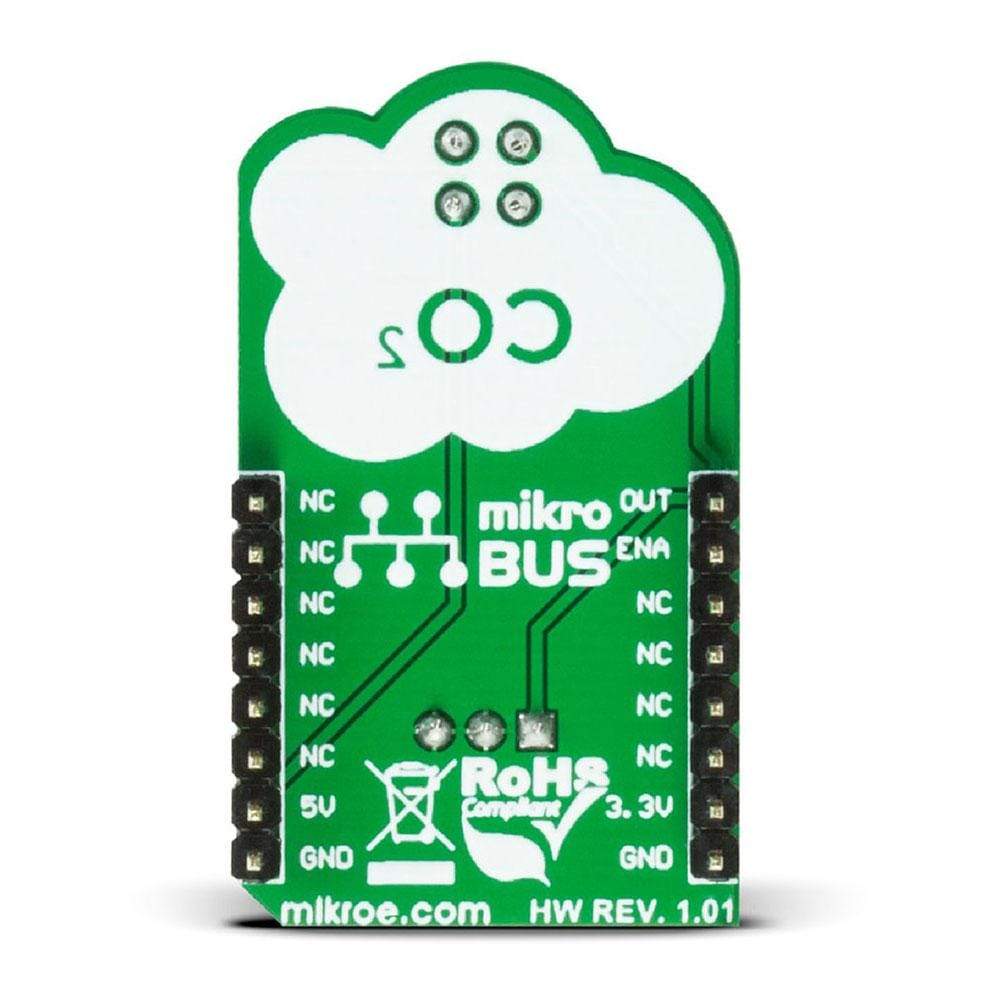
Overview
The Pollution Click Board™ has a high sensitivity to organic gases such as methanol (also known as formaldehyde), benzene, alcohol, toluene, etc. The Click Board™ carries the WSP2110 VOC gas sensor with the detection range of 1-50ppm (parts per million).
The Pollution Click Board™ is designed to run on a 5V power supply. It communicates with the target MCU via the AN and RST pins on the MikroBUSline.
Downloads
Le Pollution Click Board™ présente une sensibilité élevée aux gaz organiques tels que le méthanol (également connu sous le nom de formaldéhyde), le benzène, l'alcool, le toluène, etc. Le Click Board™ est équipé du capteur de gaz COV WSP2110 avec une plage de détection de 1 à 50 ppm (parties par million).
La Pollution Click Board™ est conçue pour fonctionner sur une alimentation 5 V. Elle communique avec le MCU cible via les broches AN et RST de la ligne MikroBUS.
| General Information | |
|---|---|
Part Number (SKU) |
MIKROE-2516
|
Manufacturer |
|
| Physical and Mechanical | |
Weight |
0.02 kg
|
| Other | |
Country of Origin |
|
HS Code Customs Tariff code
|
|
EAN |
8606015079745
|
Warranty |
|
Frequently Asked Questions
Have a Question?
Be the first to ask a question about this.

